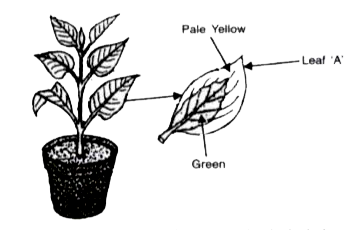What are the precautions taken to prepare a temporary mount of a leaf peel to show its stomata?
To prepare a temporary mount of a leaf peel to show its stomata, several precautions must be taken to ensure accurate results and prevent contamination. Here are the steps along with the precautions:
1. Select the Leaf:
- Use a freshly plucked leaf from a healthy plant.
- Precaution: Ensure that the leaf is free from any damage or disease to obtain a clear view of the stomata.
2. Prepare the Slide:
- Take a clean glass slide and ensure it is free from dust and grease.
- Precaution: Handle the slide carefully to avoid any contamination or smudges that could interfere with the observation.
3. Obtain the Epidermal Peel:
- Gently peel off a thin layer of the leaf epidermis using a sharp blade or forceps.
- Precaution: Avoid curling the peel; a straight and flat peel will provide a better view of the stomata.
4. Transfer the Peel:
- Use a clean brush to transfer the peel from the Petri dish to the slide.
- Precaution: Ensure that the peel is placed in the center of the slide to avoid contamination and to allow for proper observation.
5. Add Water:
- Place a drop of water on the slide before placing the peel.
- Precaution: This prevents the peel from drying out and helps in better visualization of the stomata.
6. Cover with Coverslip:
- Carefully place a coverslip over the peel to avoid air bubbles.
- Precaution: Ensure that the coverslip is placed gently to avoid damaging the peel.
7. Observe Under Microscope:
- Place the slide under the microscope and adjust the focus to observe the stomata.
- Precaution: Always start with the lowest magnification to locate the stomata before switching to higher magnifications.
- Use a freshly plucked leaf from a healthy plant.
- Precaution: Ensure that the leaf is free from any damage or disease to obtain a clear view of the stomata.
- Take a clean glass slide and ensure it is free from dust and grease.
- Precaution: Handle the slide carefully to avoid any contamination or smudges that could interfere with the observation.
- Gently peel off a thin layer of the leaf epidermis using a sharp blade or forceps.
- Precaution: Avoid curling the peel; a straight and flat peel will provide a better view of the stomata.
- Use a clean brush to transfer the peel from the Petri dish to the slide.
- Precaution: Ensure that the peel is placed in the center of the slide to avoid contamination and to allow for proper observation.
- Place a drop of water on the slide before placing the peel.
- Precaution: This prevents the peel from drying out and helps in better visualization of the stomata.
- Carefully place a coverslip over the peel to avoid air bubbles.
- Precaution: Ensure that the coverslip is placed gently to avoid damaging the peel.
- Place the slide under the microscope and adjust the focus to observe the stomata.
- Precaution: Always start with the lowest magnification to locate the stomata before switching to higher magnifications.
Similar Questions
List the steps of preparation of temporary mount of a leaf peel to observe stomata.
View SolutionWrite four sequentaial step of the procedure of experiment "Preparing a temporary" mount of a leaf peel to show stomata."
View SolutionState three precautions taken in preparing hydrogen.
View SolutionWhat are the precautions to be taken against dust allergy?
View SolutionA student prepared a temporary mount of a leaf peel and observed some green dots.
(i) Name these green dots and name the pigment present in them.
(ii) State the function of this pigment.
View SolutionIdentify the observed various parts of temporary mount of well stained leaf peel, when focused under the high power of a microscope.
View SolutionIn the laboratory preparation of nitric acid from −KNO3orNaNO3 state
(i) the acid used
(ii) the type of apparatus used
(iii) the precautions to be taken during the preparation
(iv) the method of collection of the acid
(v) the method of identification of the product i.e acid fromed.
View SolutionA student is observing the temporary mount of a leaf peel under a microscope. Draw labelled diagram of the structure (of stomata) as seen under the microscope.
View SolutionWhat do you understand by the term upthrust of a fluid?
Describe an experiment to show its existence.
View SolutionA potted plant with variegated leaves was taken in order to prove a factor necessary for photosynthesis. The potted plant was kept in the dark for 24 hours and then placed in bright sunlight for a few hours Observe the diagrams and answer the questions.

What will be the result of the starch test performed on leaf A shown in the diagram? Give an example of a plant with variegated leaves
View Solution
